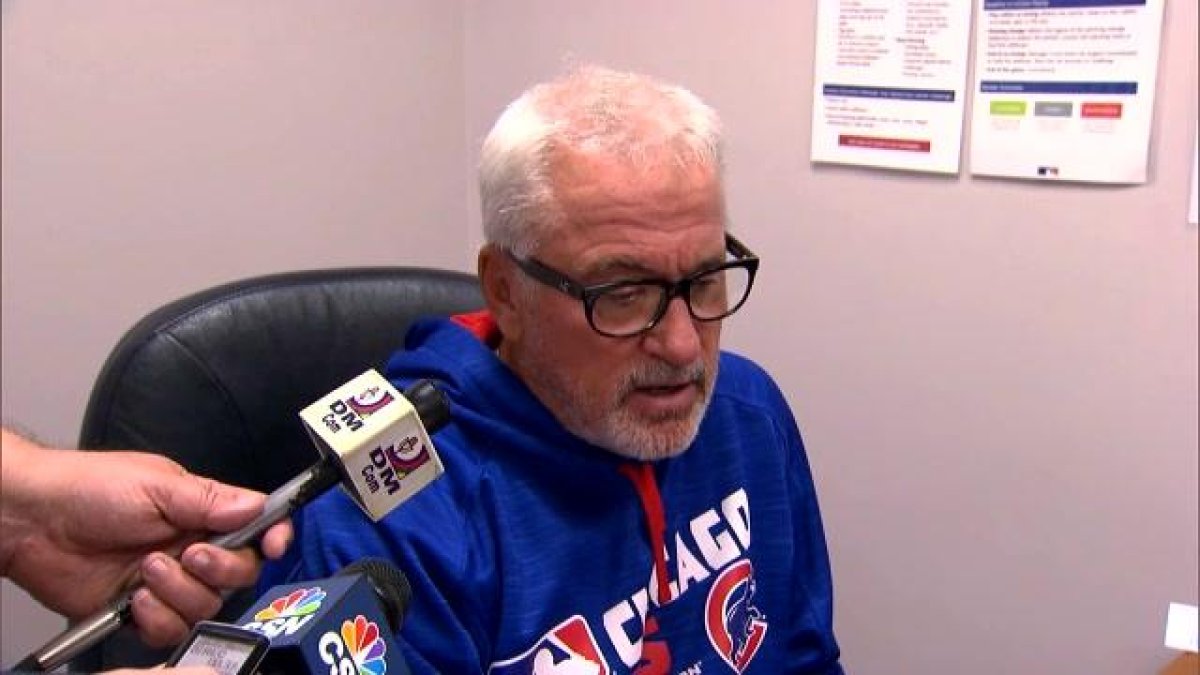
PHILADELPHIA – Six days after Cole Hamels beat Jake Arrieta and no-hit the Cubs at Wrigley Field last year, the Philadelphia Phillies accelerated their rebuild by trading a homegrown World Series MVP to the Texas Rangers in an eight-player deal that included a young right-hander named Jerad Eickhoff.
Fast forward to Tuesday night at Citizens Bank Park, and there was Eickhoff beating the best team in baseball, limiting the Cubs to one run and two hits across seven innings in a 3-2 victory while the Philadelphia brass prepared to make the No. 1 overall pick in the amateur draft less than 48 hours later.
The churn of all those flip deals and win-later trades helped transform the Cubs into a 97-win playoff contender last season and the fastest team to 40 wins this year, the best start in the majors since Lou Piniella’s Seattle Mariners won 116 games in 2001.
Which is even more impressive when you consider the Cubs have so far gone 0-for-80 in drafting and developing pitchers since Theo Epstein’s crew took over baseball operations at Wrigley Field.
Zack Godley – who was supposed to be the other pitcher packaged with intriguing prospect Jeferson Mejia in the Miguel Montero trade – accounted for 36-plus innings with the Arizona Diamondbacks last season. But except for Godley – a 10th-round pick in 2013 out of the University of Tennessee – the Epstein administration hasn’t yet found a major-league pitcher through four draft classes.
It won’t get any easier with the Cubs waiting until the 104th pick to make their first selection on Friday and having the smallest bonus pool ($2,245,100) in the majors this year.
“We all feel – not pressure – but I think we all feel the challenge,” said Jason McLeod, the senior vice president who oversees scouting and player development. “We got to identify some guys, we got to develop some guys, so that there are those pitchers that teams usually go out and get.
MLB
“We understand where we are at this point in time with the major-league team. It’s a challenge to us. We’re certainly not happy with where we are with the pitching. And we expect to be better.”
While 22-year-old outfielder Albert Almora – the first player drafted here by the Epstein administration – made his big-league debut on Tuesday in South Philly, the Cubs don’t really know when their next generation of pitchers might arrive or who might be part of that wave.
By letting Aramis Ramirez and Carlos Pena walk as free agents, the Cubs gained the 43rd and 54th overall picks in the 2012 draft, which turned into Pierce Johnson and Paul Blackburn. Johnson (lat) is injured again after putting up a 5.17 ERA in his first four starts with Triple-A Iowa and has drifted off the prospect radar, while Blackburn continues his steady growth with the Double-A Tennessee rotation (2.06 ERA through 11 starts).
Jen-Ho Tseng (shoulder) – an international signing out of Taiwan and the organization’s minor league pitcher of the year in 2014 – advanced to Tennessee but is now on the disabled list. The Cubs also had to shut down Ryan Williams (shoulder) – a 10th-round pick out of East Carolina University in 2014 and the organization’s minor league pitcher of the year in 2015 – after a strong start for Iowa’s rotation (4-1, 3.30 ERA).
Cutting a below-slot deal with No. 4 overall pick Kyle Schwarber in 2014 allowed the Cubs to buy out college commitments and give seven-figure bonuses to high school pitchers Carson Sands, Justin Steele and Dylan Cease in the fourth, fifth and sixth rounds.
The Cubs understood Cease would be a Tommy John case, took the conservative approach and now have him in extended spring training, planning to send him to Class-A Eugene this summer and see how his triple-digit velocity and big curveball might play at that short-season affiliate.
These are only snapshots, but Sands (5-0, 3.30 ERA) and Steele (3-5, 6.17 ERA) are going through the inevitable ups and downs in the Class-A South Bend rotation.
That inherent unpredictability explains why the Cubs are built around power hitters like Anthony Rizzo, Kris Bryant and Schwarber, and the overall athleticism of players like Addison Russell, Jason Heyward and Ben Zobrist.
As long as the Cubs can keep pouring money into the free-agent market, making change-of-scenery trades and gaining competitive advantages with their coaching staff, they believe they can figure out the staff from one year to the next and won’t sweat the pitching deficit now.
“Our system’s in pretty good shape overall,” Epstein said. “Obviously, we’re deeper in position players than pitching. No secret there. We’re in a pretty good position to roll the dice on some pitching upside and hopefully hit on a few guys.”